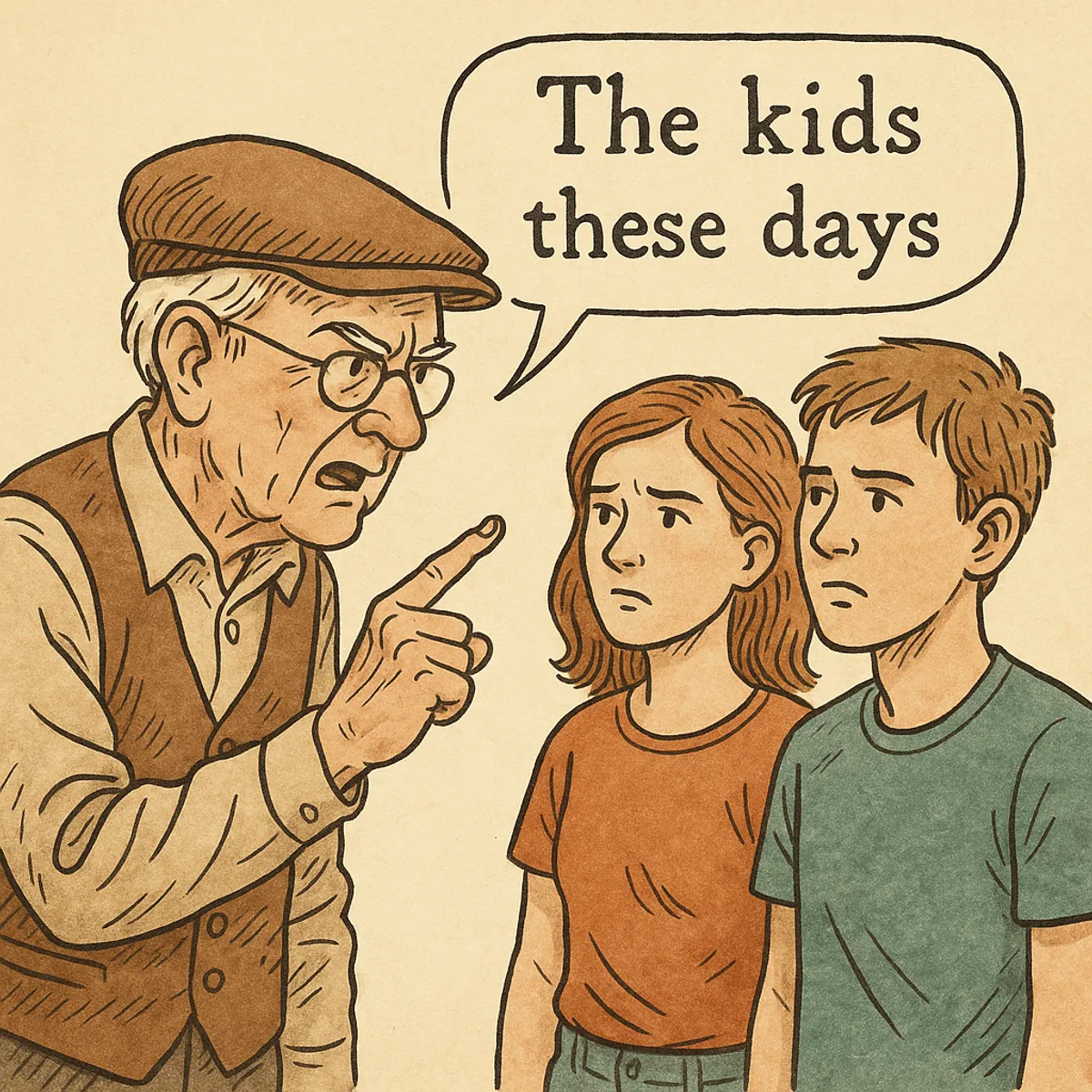
The Kids These Days
- David Hamilton
- July 23, 2025
- 4 mins
- Relationships
- communication culture relationships
“The Kids These Days”
A Look at How We Stopped Talking Kindly
Let me start by admitting this: yes, I’ve been doing this work for over 30 years, and yes, this might sound like your uncle muttering at Thanksgiving. But I’ll say it anyway: people don’t talk to each other the way they used to—and not in a good way.
This isn’t about nostalgia for outdated gender roles or wanting to bring back “yes, dear” and Sunday hats. It’s about something more basic. We’ve lost the art of speaking kindly in conflict. Not passively. Not repressively. Kindly—with awareness, pacing, and tone. And the cost shows up every day in relationships that break down not from big betrayals, but from constant, careless, sharp-edged speech.
Let’s walk through what changed.
Early 1900s: Silence in Satin Gloves
Conflict wasn’t absent in earlier generations—it was just tamped down under layers of etiquette and role expectation. Phrases like:
- “Don’t start.”
- “That’s not something we talk about.”
- “A lady doesn’t raise her voice.”
These weren’t healthy conflict strategies—they were avoidance in formalwear. Emotions were often swallowed whole, especially by women. Men “handled things” by going quiet, leaving the room, or working late. There was civility, yes, but often at the cost of emotional honesty.
Mid-1900s: Duty, Distance, and Sharp Tongues
By the 1950s, marriage was still built on roles more than emotional connection. When conflict did emerge, it often came out as coldness wrapped in condescension:
- “I work all day, and you still find something to complain about?”
- “You should be grateful I don’t drink like your father.”
- “Stop crying. You’re lucky to have a roof over your head.”
Civility persisted in public, but in private, tone could be clipped, cruel, or dismissive. There wasn’t a lot of warmth—just structure.
1970s–1980s: Finding a Voice, Losing Restraint
Then came the backlash. People started naming their feelings, standing up for themselves, breaking free from outdated scripts. Good, right? Mostly. But it came without training wheels. We went from “Don’t talk about it” to “You never listen!” in record time.
- “You’re just like your mother.”
- “I have a right to feel this way.”
- “Why do I have to be the adult in this relationship?”
This was the era of finding your voice—but not necessarily your tone. People learned how to speak up, but not how to speak with care.
1990s–2000s: Therapy Words as Weapons
By the time therapy-speak went mainstream, a lot of folks knew the buzzwords—but not the actual skills behind them.
- “That’s your trauma talking.”
- “You’re projecting.”
- “I’m not responsible for how you feel.”
These phrases sound psychologically informed, but they’re often just polished versions of blame. It’s not that people were wrong to want boundaries or language for their needs—they just skipped the part where you learn to express those things without cutting the other person off at the knees.
2010s–Now: Sarcasm, Call-Outs, and Shutdowns
Now we’re in the era of what I’ll call mic-drop communication. Think memes, TikToks, and Instagram captions—but in your kitchen, while arguing with your spouse.
- “I’m not doing this with you right now.”
- “Whatever helps you sleep at night.”
- “You’re gaslighting me.”
- “Read the room.”
There’s a snarky cleverness to how people talk now—but clever doesn’t equal connected. You can be right, and still wreck the relationship with the way you say it.
So What Do We Do?
Let’s not idealize the past. The old days had plenty of problems—silencing, condescension, double standards. But today we have a different problem: recklessness. People talk like the relationship will survive anything. It won’t.
Here’s what we need to bring back:
- Tone awareness – not just what you say, but how.
- Pacing – choosing the right moment, not the most dramatic one.
- Repair rituals – “That came out wrong. Let me try again.”
- Phrases with care, not control. Think:
- “Can we slow this down?”
- “I want to get this right.”
- “That didn’t land well—can we circle back?”
Final Thought
So yes, “the kids these days” talk differently. But they’re not hopeless. They’re overwhelmed, undertrained, and often repeating what they’ve heard without realizing the emotional toll.
We don’t need to go backward—we need to go deeper. Teach people not just to express themselves, but to build something with their words, not tear something down.
And if that makes me sound like an old codger—so be it. I’d rather be old and kind than current and careless.